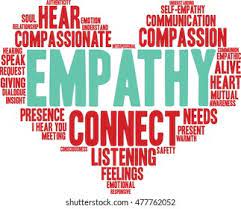Shared Suffering: Enter Into Their Story
You have heard the old adage that “people don’t care what you know until they know that you care.” Hurting and broken people are not looking for advice, opinions, or judgments. They need someone who genuinely cares about their pain to come alongside them and hurt with them.

After making the commitment to approach someone who is hurting, with only their well-being in mind, and after you are fully attentive and curious enough to understand their situation, it’s important to enter their story and try to feel their pain. This is where the real healing begins.
The gift of friendship happens when someone comes along right when we need it with genuine love and compassion. Like a balm to an open wound, someone will sit with us, listen to us, validate our feelings, and even cry with us through our heartache or pain. They connect with our soul, and for some unexplainable reason, we feel that our soul begins to heal. It has something to do with the fellowship of suffering. When someone genuinely cares about your story and feels your pain. That sacrificial connection and shared experience is a gift.
Living connected and rescuing one another begins with seeing life through the lens of compassion. The Latin root for the word compassion is pati, which means to suffer, and the prefix com– means with. Compassion, originating from compati, literally means to suffer with. It is often defined as the feeling that arises when you are confronted with another’s suffering and feel motivated to relieve that suffering.
Compassion is not the same as empathy or sympathy, though the concepts are related. While empathy refers more generally to our ability to take the perspective of and feel another person’s emotions, compassion is when those feelings and thoughts include the desire to help. Sympathy is the feeling that you care about and are sorry about someone else’s trouble, grief, or misfortune.
Empathy is the ability to emotionally understand what other people feel, to see things from their point of view, and imagine yourself in their place. Essentially, it is putting yourself in someone else’s shoes and feeling what they must be feeling.
Compassion, therefore, happens when your heart hurts for someone who is hurting, and you are compelled to connect with them to help heal their pain.
Connecting in a soul-to-soul healing way can usually only come behind genuine compassion. Disingenuous connections that are forced don’t convey the genuine interest and selfless agenda that is needed to help heal someone who is hurting. Fortunately, compassion and empathy can be developed once you get others-focused and less self-focused. If you are sincere in your desire to connect with someone hurting for their benefit, you are well on your way to developing empathy and compassion.